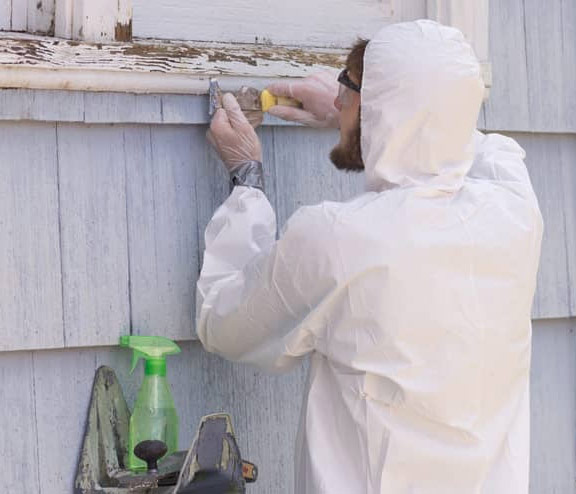Trusted Lead Paint Removal Company-- NYC's Premier Lead Reduction Service
Trusted Lead Paint Removal Company-- NYC's Premier Lead Reduction Service
Blog Article
Step-by-Step Refine for Effective Lead Offense Remediation
Following this, adherence to government and state policies is critical to developing an efficient removal plan. The real removal calls for proficient workers to implement these strategies while purely adhering to security methods. What happens after the removal is finished?

Discovery and Assessment
Discovery and assessment are vital steps in the remediation of lead infractions. To make sure an efficient remediation procedure, it is important to perform a detailed examination of the atmosphere where prospective lead direct exposure exists.
When detection is achieved, a comprehensive analysis has to be carried out. This includes reviewing the extent and seriousness of contamination, as well as determining populations at threat, specifically kids and expecting women. Risk evaluations commonly involve tasting and research laboratory analysis, environmental surveys, and wellness influence researches. The gathered data need to be diligently documented to support the growth of a reliable remediation strategy (Lead Violation Removal in NYC).
Moreover, it is vital to prioritize locations with the highest degree of contamination and those that pose the biggest health dangers. Efficient interaction with stakeholders, consisting of residential property proprietors, residents, and public health and wellness officials, is vital for making certain that all parties are notified concerning the findings and the succeeding actions needed for removal. This initial discovery and assessment phase lays the foundation for an effective lead violation removal process.

Lawful and Regulative Compliance
Navigating the landscape of lawful and regulatory conformity is an essential aspect of successful lead violation remediation. Conformity ensures not just the safety and security of damaged populaces but also the integrity and lawful standing of the organization responsible for remediation.
State and regional guidelines can vary, commonly enforcing extra responsibilities or more rigorous criteria. Therefore, a comprehensive understanding of all relevant lawful frameworks is critical. This entails thorough documents of all remediation tasks to show compliance. Failure to comply with these regulations can cause extreme charges, consisting of substantial penalties, legal action, and reputational damages.
Engaging lawful professionals focused on ecological regulation can facilitate browsing these intricacies. Normal training and certification for all personnel entailed in the remediation process are additionally compulsory to make certain adherence to safety and governing requirements. By prioritizing lawful and regulatory conformity, organizations can properly reduce dangers and accomplish a successful removal outcome.
Preparation the Remediation
Efficiently planning the removal of lead violations begins with a complete assessment of the infected website. This first evaluation needs to include an in-depth website investigation to recognize the degree and focus of lead contamination. Comprehensive sampling and laboratory evaluation are vital to create a precise contamination profile. This data-driven method ensures that removal efforts are properly targeted and efficient.
When the contamination is mapped, a threat evaluation need to be conducted to evaluate prospective health and wellness dangers to human beings and the setting. Lead Violation Removal in NYC. This evaluation should take into consideration factors such as direct this link exposure paths, population susceptability, and ecological impacts. The insights collected will form the basis for picking an appropriate removal technique
Subsequently, establishing clear, attainable purposes for the remediation job is important. These purposes should line up with governing criteria and stakeholder assumptions to make sure compliance and area acceptance. Establishing a detailed removal strategy that details approaches, timelines, and resource allowance will assist in an organized method to the clean-up process.
Furthermore, it is necessary to involve with stakeholders early and maintain transparent interaction throughout the planning phase. This consists of notifying regional areas, acquiring needed authorizations, and collaborating with governing firms to make certain all lawful and procedural requirements are fulfilled. A well-crafted removal plan not only attends to the contamination properly however additionally develops trust fund and teamwork among all events included.
Carrying Out the Removal
With a well-structured remediation plan in position, the focus shifts to the real implementation of the removal tasks. This stage includes mobilizing the required resources, consisting of skilled personnel, customized devices, and premium products. Begin by clearly delineating functions and obligations to make certain responsibility and seamless coordination among employee.
This consists of establishing up control locations to stop lead dust and particles from spreading, as well as employing air filtration systems to preserve air quality. Use methods such as wet scratching, chemical removing, or encapsulation, depending on the severity and area of the contamination.
Throughout the removal procedure, conduct regular examinations and air quality keeping track of to make certain compliance with regulatory requirements. Reliable communication with stakeholders, including residential property proprietors and residents, is vital to keep them notified of progression and any unforeseen advancements. By meticulously adhering to these steps, the removal activities can be performed successfully and successfully, eventually mitigating lead dangers.
Post-Remediation Strategies
Post-remediation strategies play an important role in ensuring the lasting success of lead violation removal efforts. These approaches include continuous tracking, maintenance, and area education and learning to protect against future lead exposure and make certain a secure environment.
First, routine tracking is important. This involves periodic screening of the previously affected locations to make sure that lead levels remain within resource safe restrictions. Homeowner should establish a routine for these examinations, ideally in partnership with licensed ecological professionals.

Third, enlightening the neighborhood plays a pivotal duty in maintaining the advantages of removal. Residents and building supervisors need to be notified concerning the dangers of lead direct exposure and the most effective techniques for preserving a lead-safe environment. Workshops, informational handouts, and community meetings can be effective devices for sharing this info.
Conclusion
Successful lead infraction remediation calls for a comprehensive, methodical approach encompassing discovery and assessment of contamination, adherence to lawful and regulative standards, meticulous planning, and reliable execution of remediation efforts. This systematic procedure underscores the value of thoroughness and alertness in addressing and minimizing lead contamination.
Report this page